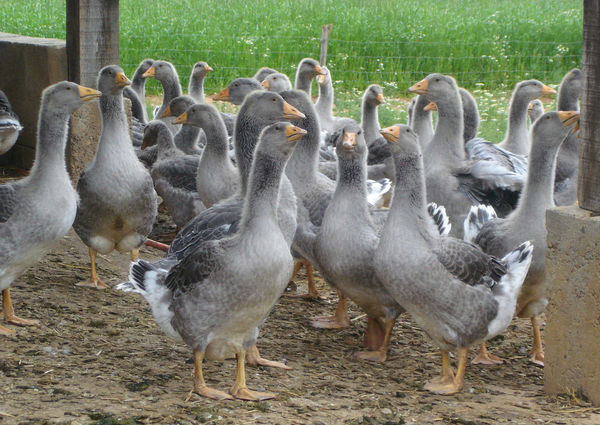Well-Fed Geese in France’s Dordogne
By Rick Steves
Elbows on a rustic windowsill on a farm in France's Dordogne region, I lost track of time watching Denis grab one goose at a time from an endless line of geese. In a kind of peaceful, mesmerizing trance, he'd fill each one with corn. Like his father and his father and his father, Denis spends five hours a day, every day, all year long sitting in a barn on a rolling stool with a machine that looks like a giant vacuum cleaner filled with corn, surrounded by geese.
Denis rhythmically grabs a goose by the neck, pulls him under his leg and stretches him up, slides the tube down to the belly, and fills it with corn. He pulls the trigger to squirt the corn, slowly slides the tube up the neck and out, holds the beak shut for a few seconds, lets that goose go, and grabs the next.
When I told friends I'd witness geese being force-fed — the traditional way they fatten the livers to make foie gras, the prized delicacy of the Dordogne — many expressed disgust. There are actually people who want to boycott French foie gras for what they consider inhumane treatment of the geese. That's why I was on Denis' goose farm: to learn more about la gavage (as the force-feeding process is called).
Elevage du Bouyssou, a big homey goose farm a short drive from Sarlat, is run by Denis and Nathalie Mazet. Their geese are filled with corn three times a day for the last months of their lives. They have expandable livers and no gag reflex, so the corn stays there gradually settling as it is digested and making room for the next visit from Denis and his corn gun. Watching Denis work, I wondered what his life was like, spending so much time with a perpetual cycle of geese. Did geese populate his dreams? How did it affect his relations with his wife?
While Denis squirts corn, Nathalie meets tourists — mostly French families — who show up each evening at six o'clock to see how their beloved foie gras is made. The groups stroll the idyllic farm as Nathalie explains how they raise a thousand geese a year. She stresses that the key to top-quality foie gras is happy geese raised on quality food in an unstressed environment. They need quality corn and the same feeder.
I join the group and scatter seed for the baby geese. We stroll into the grassy back lot where the older geese run free. Backlit by the low early-evening sun, they glow in rich colors.
The Mazets sell every part of each slaughtered goose but the head and feet. The down feathers only net about 30 cents a goose — the serious money is in the livers. A normal liver weighs a quarter-pound. When the months-long force-feeding process is complete, the average liver weighs about two pounds. (With a thousand geese, they produce a ton of foie gras annually.)
These force-fed geese actually have a special shape — they waddle around as if wearing a full diaper under their feathers. This shape is a sales icon in shops throughout the region, and the sight of it is enough to make visiting English travelers — who come here in droves for the foie gras — salivate.
Nathalie, like other French enthusiasts of la gavage, says that while their animals are calm, in no pain, and are designed to take in food this manner, American farm animals are typically kept in little boxes and fed chemicals and hormones to get fat. Most battery chickens in the US live less than two months and are plumped with hormones. Her geese are free range and live for about six months.
Dordogne geese live lives at least as comfy as other farm animals (the same ones happily eaten by many of the people people upset with the foie-gras process) and are slaughtered as humanely as any non-human can expect in this food-chain existence.
After a few days in the Dordogne, where farmers in the markets are evangelical about their foie gras and constantly passing out little goose-liver sandwiches, and where every meal seems to start with a foie gras course, I always leave looking forward to a foie-gras detox.

